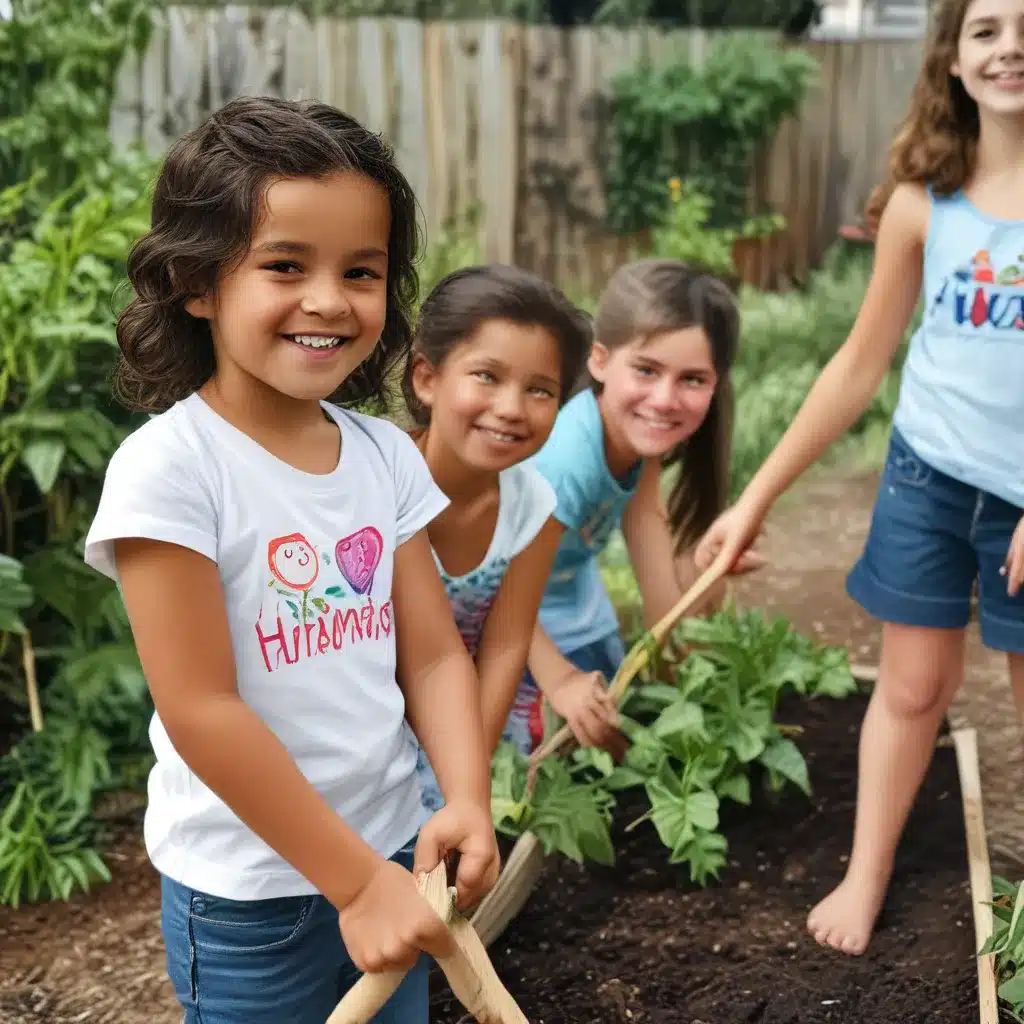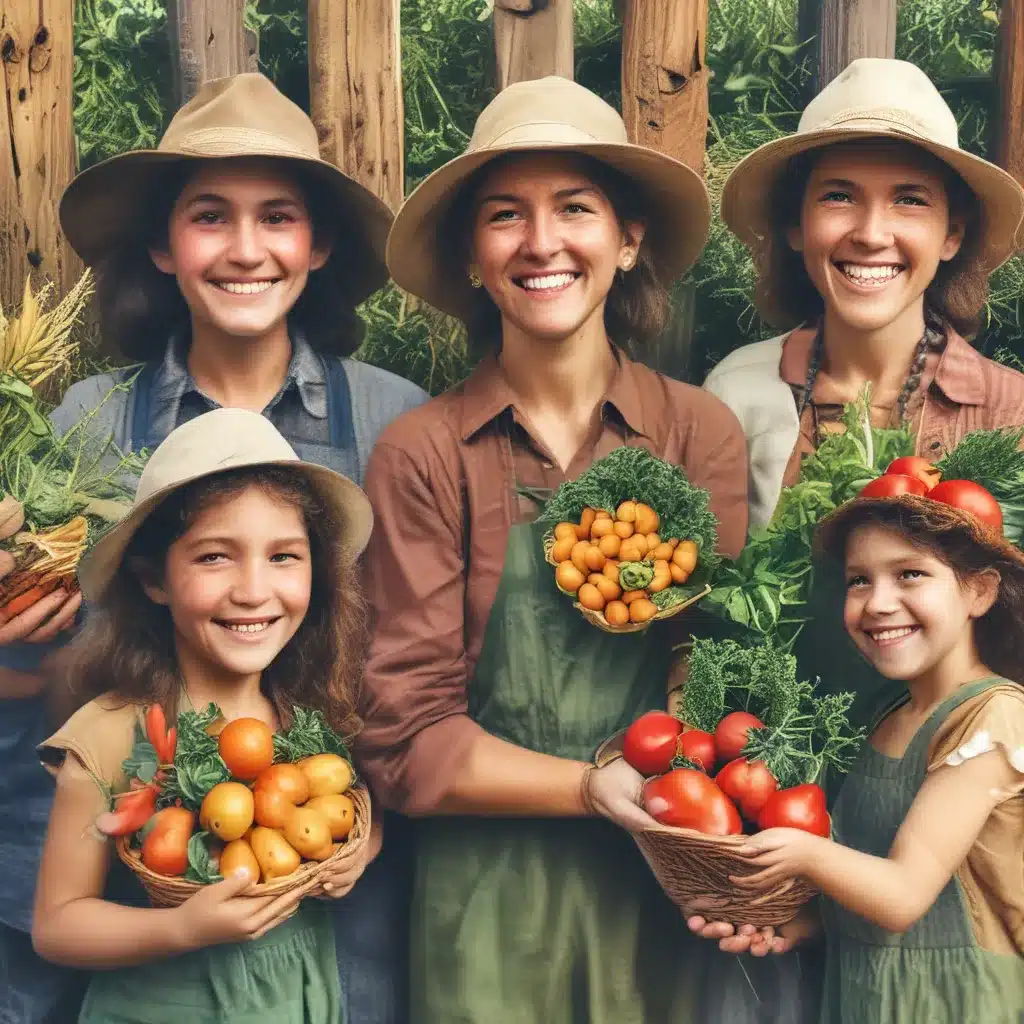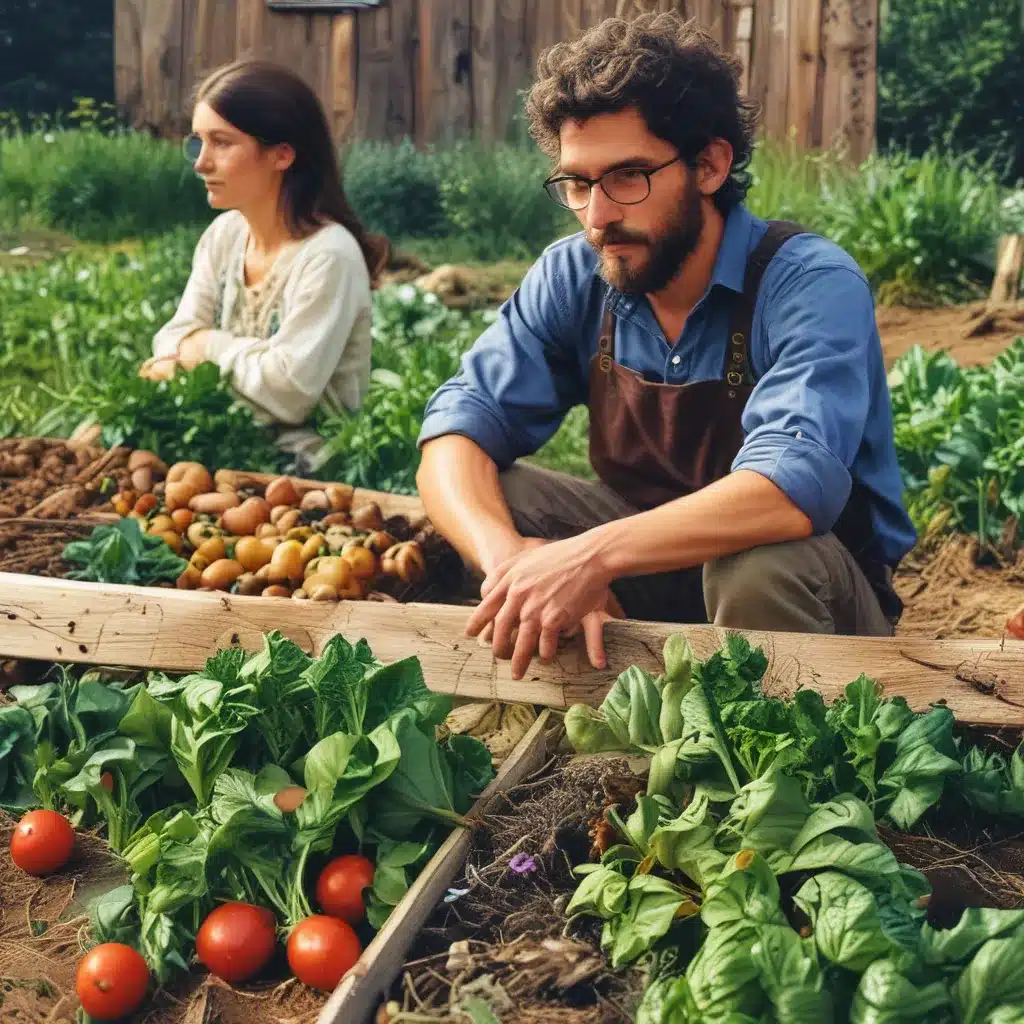
Planting the Seeds of Community
In the bustling heart of the city, where towering skyscrapers cast long shadows and the streets hum with the relentless rhythm of progress, a remarkable transformation is taking place. Amidst the concrete and asphalt, a quiet revolution is taking root – one cultivated by the curious hands and eager minds of our city’s youngest residents. Welcome to the world of community gardening, where kids are not only growing their own food but also cultivating a deep sense of belonging and a connection to the natural world.
In the Franklin County master-gardener program, volunteers with green thumbs and big hearts are making a profound impact on their local communities. In 2016 alone, they provided over 12,800 pounds of fresh produce to food banks and community groups, all while logging an impressive 12,862 hours of service. “Without them, it would not be possible to offer such wonderful programming to our students,” said Bill Costello, the horticulture teacher at the Ohio School for the Deaf, one of the many groups benefiting from the generosity of these dedicated green-fingered heroes.
Sowing the Seeds of Hope
One such hero is Sue Simon, a Westerville resident and the 2017 master-gardener volunteer of the year. Sue’s passion for community gardening extends far beyond her own plot; she organizes volunteer workdays, leads workshops for elementary students, and helps guide a garden staffed by volunteers from Big Lots Corp, which donated 2,000 pounds of food to Lutheran Social Services last year. “I think food insecurity is a major social-justice issue, and I love to garden and grow things,” Sue explains. “So it was something that combined these things that were so important to me.”
Sue’s impact extends beyond the garden, as she works tirelessly to transform a community space across the street from the Friends of the Homeless men’s shelter in Olde Towne East. “This garden allows me to work with, on one side, a CEO, and on the other, a homeless man,” she says. “When you’re digging, when you’re gardening, it’s the best kind of equalizer.” Sue’s vision is to turn this once-neglected plot into a vibrant community park, complete with a gazebo and murals created by local artists.
Cultivating Connections
Gardening with kids isn’t just about growing plants – it’s about nurturing the connections that blossom between families, neighborhoods, and the natural world. Studies have shown that gardening can boost kids’ focus, reduce stress, and lift their moods, all while teaching them valuable life skills like responsibility and patience.
“Spending time together in the garden is a perfect way to bond as a family,” explains Jennifer, the founder of The Flowering Farmhouse. “It gets everyone outside, away from screens, and working together on something meaningful. The garden can become a special place where conversations flow and laughter echoes.” Whether it’s planting seeds, watering plants, or observing the life cycle of a ladybug, these shared moments in the garden become cherished memories that last a lifetime.
Nurturing Curiosity and Creativity
But the benefits of community gardening go far beyond family bonding. By involving kids in the gardening process, parents and educators can inspire a deep sense of curiosity and creativity. Thornapple CSA, a community-supported agriculture service, knows the power of engaging young minds in the garden. “When kids get to choose the plants, design their own garden spaces, and experiment with new growing techniques, they become invested in the process,” explains Sarah, the program coordinator. “This not only keeps them interested in gardening but also teaches them about the natural world and sustainable living.”
From building mini bug hotels and bird feeders to designing themed gardens like a pizza patch or a rainbow oasis, the opportunities for hands-on learning and self-expression are endless. “Letting kids get creative with their gardens and see the fruits of their labor is key to keeping them engaged and excited,” Sarah adds. “It’s all about sparking that sense of wonder and nurturing their green thumbs.”
Cultivating Resilience and Responsibility
Of course, gardening with kids isn’t all sunshine and rainbows. As any seasoned gardener knows, there are always challenges to overcome, from pesky pests to unpredictable weather. But these obstacles present valuable learning opportunities, teaching kids the importance of resilience and adaptability.
“When things don’t go as planned, it’s important to use those moments as teaching moments,” Jennifer advises. “Explain that, just like in life, sometimes plants don’t grow as expected, but we can learn and grow from these experiences.” Celebrating small victories, like the first cherry tomato or a vibrant flower in bloom, can also boost a child’s confidence and sense of accomplishment, instilling a lifelong appreciation for the natural world.
Sowing the Seeds of Sustainability
Beyond the personal benefits, community gardening with kids also fosters a deeper understanding of environmental stewardship and sustainable living. By involving children in composting, water conservation, and the creation of pollinator-friendly habitats, parents and educators can cultivate a generation of eco-conscious individuals.
“Gardening is the perfect way to introduce kids to the importance of sustainability,” Sarah explains. “When they see how their actions, like composting or using rainwater, directly benefit the plants and the environment, it sparks a sense of responsibility and connection that can last a lifetime.” From building a worm farm to designing a solar-powered oven, the opportunities for hands-on sustainable projects are endless, empowering kids to make a positive impact on the world around them.
Harvesting a Brighter Future
As the sun sets on another day in the community garden, the laughter and chatter of children fill the air, a testament to the power of these green oases to bring people together. Whether it’s sharing stories, swapping gardening tips, or simply reveling in the beauty of nature, these shared experiences have the power to transcend boundaries and cultivate a deep sense of community.
“Gardening with kids is not just about growing plants – it’s about growing a better future,” Sarah reflects. “By nurturing their curiosity, creativity, and connection to the natural world, we’re planting the seeds for a generation of engaged, responsible, and environmentally conscious citizens.” And as the quiet revolution of community gardening continues to spread, the possibilities for transforming our cities and our lives are as limitless as the vibrant blooms that grace these urban sanctuaries.
So, let’s get our hands dirty and our hearts open, as we embark on this journey of cultivating green thumbs and big hearts, one garden at a time.



